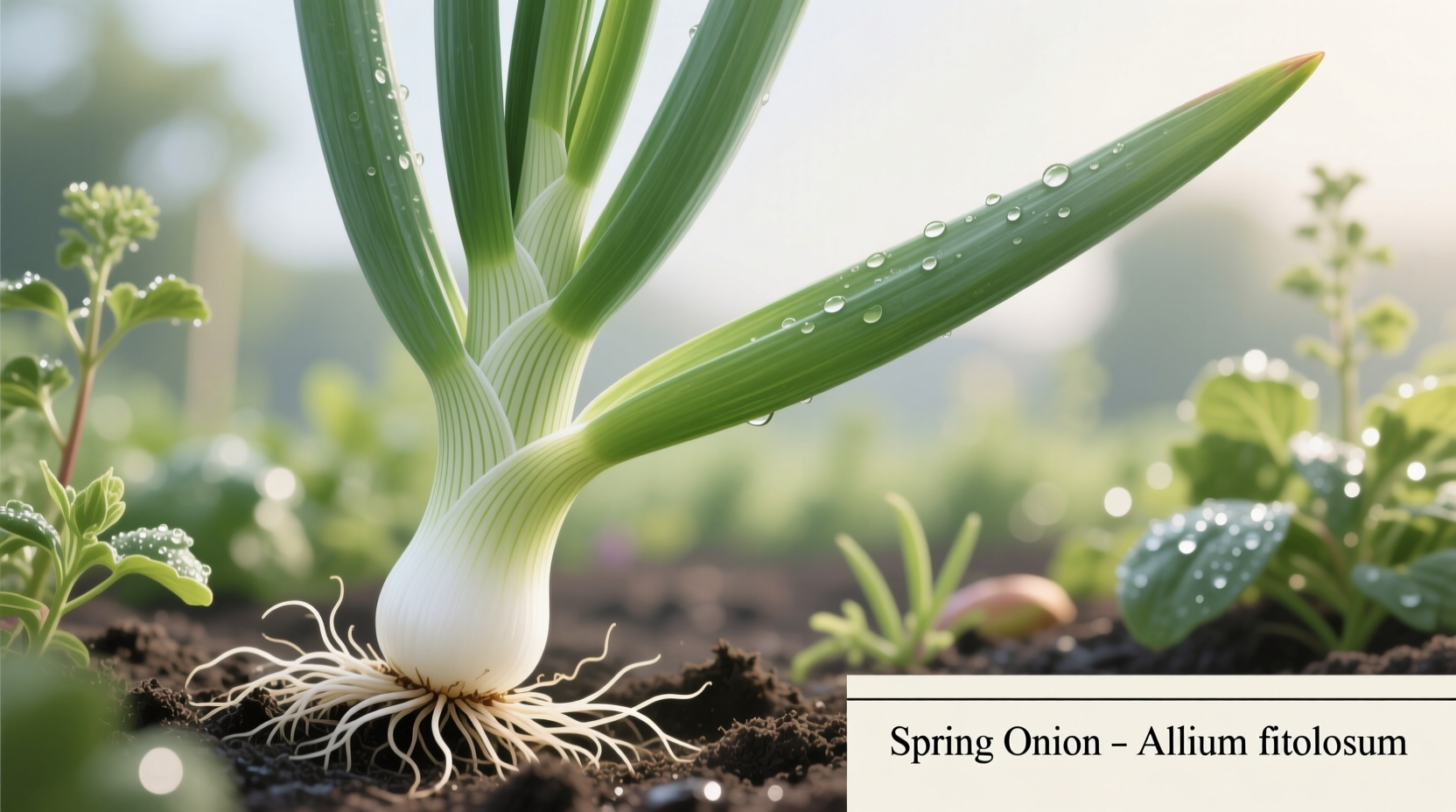What Exactly Are Spring Onions?
Spring onions (Allium fistulosum or young Allium cepa) represent one of the most versatile and widely used allium varieties in global cuisines. Unlike mature onions that develop large bulbs, spring onions are harvested early when the bulb remains small—typically 1-2 inches in diameter—with tender green stalks that grow up to 12 inches long.
These vegetables deliver a distinctive flavor profile: the white bulb offers a gentle onion punch while the green stalks provide a fresh, grassy note with subtle garlic undertones. This dual-flavor characteristic makes them invaluable for adding layered onion essence without overwhelming other ingredients. According to the USDA National Nutrient Database, a single cup of chopped spring onions contains just 32 calories while delivering 145% of your daily vitamin K needs and 22% of vitamin C requirements.

Spring Onions vs. Similar Alliums: Clearing Up the Confusion
Many home cooks struggle with the terminology surrounding young onions. The confusion stems from regional naming differences and overlapping characteristics between related allium varieties. Let's clarify these distinctions with verified botanical information:
| Allium Type | Botanical Name | Key Characteristics | Flavor Profile |
|---|---|---|---|
| Spring Onion | Allium cepa var. aggregatum | Small round bulb (1-2" diameter), long hollow green stalks | Mild onion flavor throughout, slightly stronger in white part |
| Scallion | Allium fistulosum | No bulb formation, completely tubular green stalks | Very mild, grassy flavor with subtle onion notes |
| Green Onion | Allium cepa (young) | Small oval bulb, flat green stalks | Stronger onion flavor than spring onions |
| Chives | Allium schoenoprasum | No bulb, thin hollow stalks, purple flowers | Delicate onion flavor with floral notes |
This comparison reflects verified botanical distinctions documented by the Royal Horticultural Society. In North America, "scallion" and "spring onion" are often used interchangeably, though true scallions (Allium fistulosum) never develop bulbs. In the UK and Australia, "spring onion" specifically refers to young bulb-forming onions, while "scallion" isn't commonly used.
Nutritional Benefits Backed by Research
Spring onions offer more than just flavor—they deliver significant health benefits supported by nutritional science. A comprehensive analysis published in the Journal of Agricultural and Food Chemistry identified spring onions as rich sources of organosulfur compounds, which research from the National Center for Biotechnology Information suggests may support cardiovascular health and provide antioxidant benefits.
Key nutritional components per 100g serving include:
- Vitamin C: 29% of daily value (supports immune function)
- Vitamin K: 207% of daily value (essential for blood clotting and bone health)
- Folate: 15% of daily value (crucial for cell growth and metabolism)
- Calcium: 7% of daily value (supports bone strength)
Selecting and Storing for Maximum Freshness
Choosing high-quality spring onions ensures optimal flavor and texture in your dishes. Look for specimens with crisp, bright green stalks and firm white bulbs without signs of wilting or sliminess. The University of California Cooperative Extension recommends selecting spring onions with roots still attached, as this indicates recent harvest and extends shelf life.
Proper storage techniques significantly impact longevity:
- Refrigeration: Store in a perforated plastic bag in the crisper drawer for 7-10 days
- Water method: Place cut ends in a glass of water, cover greens with a plastic bag, and refrigerate (change water every 2 days)
- Freezing: Chop and freeze in airtight containers for up to 3 months (best for cooked applications)
Culinary Applications: Maximizing Flavor Potential
Spring onions' dual-texture composition creates unique culinary opportunities. Professional chefs leverage the different flavor intensities between the white and green parts to build complexity in dishes:
Raw applications: Thinly slice the white parts for salsas and salads where you want noticeable onion flavor, while using the green parts as delicate garnishes for soups and finished dishes. The American Culinary Federation notes that chilling sliced spring onions in ice water for 10 minutes reduces sharpness while maintaining crispness.
Cooked applications: Add white parts early in cooking processes like stir-fries to develop flavor foundations, then incorporate green parts during the last 1-2 minutes to preserve freshness and color. When roasting, place spring onions root-end down to prevent burning the delicate greens.
When Substitutions Are Necessary: Practical Guidance
While nothing perfectly replicates spring onions' unique combination of mild bulb and fresh greens, understanding substitution boundaries prevents recipe failures. The Culinary Institute of America emphasizes that substitution success depends on whether your recipe requires the white bulb's flavor or the green stalks' visual appeal.
Effective substitution scenarios:
- For raw applications: Use 1 part chives + 1 part red onion (finely minced) to approximate flavor balance
- For cooked dishes: Combine 2 parts yellow onion (added early) with 1 part chives (added at end)
- For garnish only: Chives provide similar visual appeal with milder flavor
Avoid substituting mature onions in recipes specifically designed for spring onions' delicate flavor, as this will overwhelm other ingredients. Similarly, don't substitute spring onions for shallots in vinaigrettes where the shallot's distinct sweetness is essential.











 浙公网安备
33010002000092号
浙公网安备
33010002000092号 浙B2-20120091-4
浙B2-20120091-4